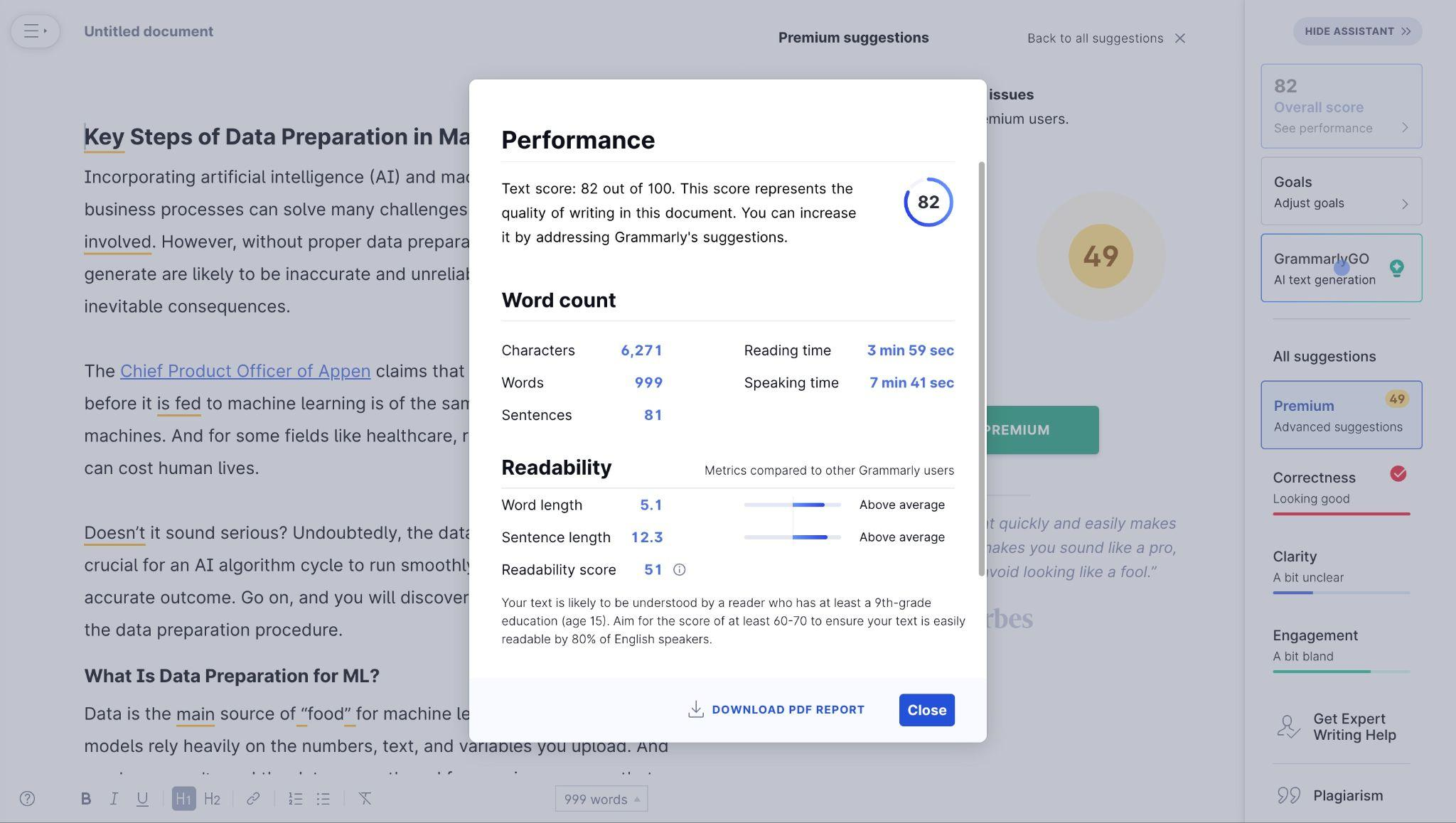Introduction
Incorporating artificial intelligence (AI) and machine learning (ML) into business processes can solve many challenges where data analysis is involved. However, without proper data preparation, the results ML will generate are likely to be inaccurate and unreliable. This, in turn, can lead to inevitable consequences.
The Chief Product Officer of Appen claims that investing in data cleaning before it is fed to ML is of the same value as investing in machines. In some fields, like healthcare, receiving erroneous data can cost human lives.
Undoubtedly, the data preparation stage is crucial for an AI lifecycle to run smoothly and for you to yield an accurate outcome. Read on, and you will discover the key steps in the data preparation procedure.
What Is Data Preparation for ML?
Data is the main source of “food” for ML. The training models rely heavily on the numbers, text, and variables you upload. Surely you can’t send the data you gathered from various sources that contain missing information or are in an unaltered format. Fixing the errors in the raw data refers to data preparation.
Why Data Preparation Is Important
The most well-directed phrase that would characterize the significance of data preparation for ML is GIGO: "Garbage in, garbage out." George Fuechsel, an IBM programmer, first proposed it in 1962. It states that if we feed incorrect information to machines, we will receive false, subpar predictions and terrible results.
The examples of bad data preparation are numerous. One is depicted in the article "Forecasting for COVID-19 has failed," issued in 2020. The training mechanisms were to forecast the mortality rate. However, the information that was given contained test results for the weekend and the upcoming week. Thus, the mortality rate was wrongly calculated and exaggerated.
What Are the Steps in Data Prep for Achieving Accurate Results?
Whether you use an AI platform or have experienced data scientists on your team, you have to know how to prepare and clean your raw data. Below, you can get acquainted with the main steps every business should consider when adopting ML.
Setting Business Goals
ML should be an instrument for your business journey but not the main focus. In no way is it possible to attain proper results if you don't adjust the training model and the data to your business needs.
For example, if you aim to get a solution on how to build your strategy for the future, not all data is highly important for you. At the same time, you have to provide the ML with a clear problem explanation if you want to receive comprehensible results.
Collecting Data
Gathering data from multiple sources refers to data collection. This is a huge process as it will identify the data needed for ML mechanisms.
In companies, collecting data comes from different sources. For example, the IT department generates data on customers, purchases, transactions, employees, etc. Data scientists can gather information from internal records, like data warehouses.
Besides, you can include data from external sources like social media and other portals where customers leave feedback.
Usually, data scientists use the following data collection methods:
● Built-in data collection functions. These are the features on the platform that automatically collect data from users.
● Transaction tracking. Every time customers make purchases from you, they fill in their info, which you can use to plan your marketing strategy.
● Interviews. This is the best method to ask customers for feedback on your company.
● Forms and surveys. Online questionnaires can provide qualitative data in a cost-effective way.
● Social media tracking. Social media channels serve not only to see how many followers you get but also to receive an analytical picture of user engagement.
● Observation. Additionally, data scientists observe user journeys on the website with the help of third-party programs.
Cleaning Data
After you gather information from internal and external resources, there is data cleaning. This covers error correction and fulfilling the missing data. The following are the processes that include data cleaning:
● Completing missing values. Missing data is the most common obstacle that happens when cleaning data. You can fill it with estimated results or remove it.
● Managing outliers. Outliers are numbers that are extremely high or extremely low. They can be removed or changed to the approximate amount as missing data.
● Leaving only relevant data. As mentioned, not all the data you gather will be useful to include in ML. You can avoid noise and receive more precise results by reducing irrelevant ones.
● Getting rid of duplicates. Duplicates in data will take time and storage. That is why identifying identical data and merging it or removing it should be applied.
Formatting Data
Considering that you get data from different sources, it is in different formats. However, converting it into one file format will not be enough. Every piece of information should be formatted in the same manner. For example, all transactions should be either $10.00 or 10 dollars, and it applies to every variable.
Splitting Data
Before feeding data to ML models, it should also be split. Usually, data scientists divide data into three or four subsets, like a training set, a development or validation set, and a testing set. This technique helps determine how the training models will handle the data they have never seen before.
Final Words
Data preparation is a crucial step that precedes uploading it for ML. The better you prepare your data, the more accurate results you will get. The steps of data prep cover multiple processes, including analyzing the goals for ML mechanisms, data collection, data cleaning, data formatting, and data splitting. If you invest time and money in data preparation, machines will do the rest of the work flawlessly.

